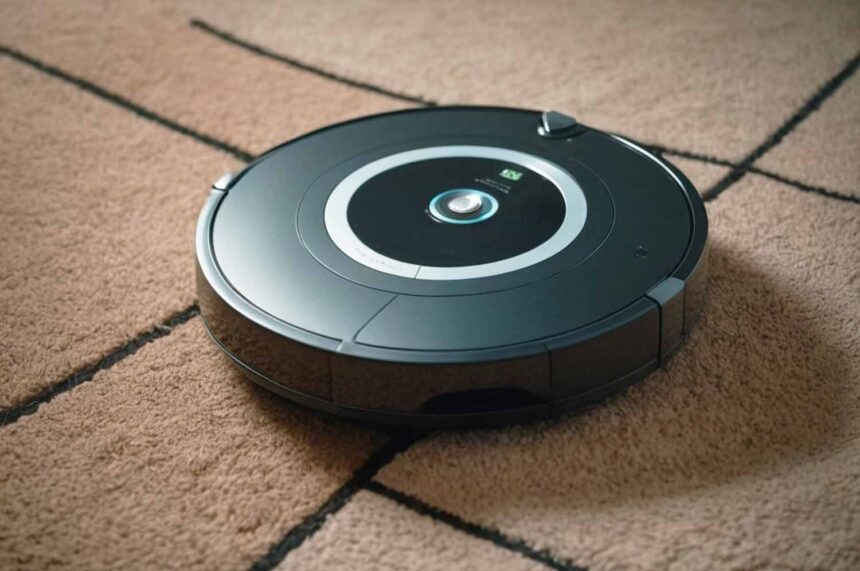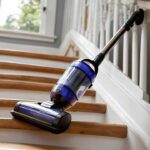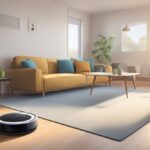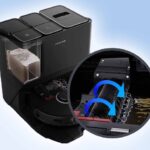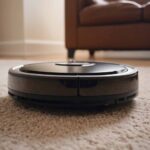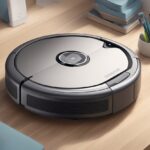The landscape of home cleaning has been revolutionized by the advent of robot vacuums, transitioning from a luxury item to pretty much a necessity within modern households.
Advancements in sensor technology, artificial intelligence, and machine learning have enabled these devices to provide thorough, efficient, and customizable cleaning experiences. I believe robot vacuums will be a common permanent fixture in modern households in the near future, just like the dishwasher.
The narrative of robot vacuums has shifted from an optional accessory to an indispensable asset for individuals leading busy or physically demanding lives.
Historical Trajectory of Robot Vacuums
Evolution of Robot Vacuum Technology: Milestones and Leading Brands
| Year | Advancement | Leading Brand(s) |
|---|---|---|
| 2002 | Release of the first mass-market robot vacuum | iRobot (Roomba) |
| 2004 | Introduction of scheduling features | iRobot (Roomba scheduling features) |
| 2007 | Introduction of dirt detection technology | iRobot (Dirt detection technology) |
| 2010 | Advancements in mapping and navigation technology | Various brands (Neato, iRobot) |
| 2012 | Development of more efficient cleaning patterns | Neato, iRobot (Efficient cleaning patterns) |
| 2015 | Integration of Wi-Fi and smartphone app controls | iRobot, Neato (Smart connectivity) |
| 2016 | Enhanced AI for room recognition and targeted cleaning | iRobot, Neato (Advanced AI for room recognition) |
| 2016 | Introduction of combined mopping and vacuuming functionality | Various brands (Combined mopping and vacuuming) |
| 2018 | Incorporation of AI for better obstacle detection | iRobot, Neato, Dyson (AI integration) |
| 2019 | Voice assistant integration | Various brands (Voice assistant integration) |
| 2020 | Improved battery life and suction power | iRobot, Roborock (Battery and suction improvements) |
| 2021 | Improved edge and corner cleaning technology | Various brands (Edge and corner cleaning) |
| 2023 | Self-emptying dustbins and advanced home integration | iRobot, Shark, Roborock (Self-emptying, home integration) |
| 2024 (Predicted) | Enhanced environmental sensing and adaptive cleaning | Emerging technology leaders |
| 2025 (Predicted) | Autonomous multi-floor cleaning with advanced AI | Potential new entrants and existing leaders |
| 2030 (Predicted) | Fully autonomous, self-maintaining robot vacuums | Diverse range of brands with smart home ecosystem integration |
Pioneering Innovations: From Electrolux to Roomba
In 1996, the Electrolux Trilobite was a pioneering force in the vacuum robot domain, embedding the promise of automated cleaning technology into the fabric of daily living.
After its release, iRobot’s Roomba debuted in 2002 and played a crucial role in bringing robot vacuums into the mainstream market. It was not only about the convenience but also the novelty of having a machine clean autonomously.
The founder of iRobot, Richard Chang, has been a significant figure in pushing the boundaries of robot vacuum development. His vision materialized into a product that evolved from a luxury item to an accessible cleaning tool for people across socioeconomic spectrums.
Technological Advances in Robot Vacuums
As the industry matured, companies like Dyson and Samsung have driven advancements in robot vacuum cleaner technology.
Artificial Intelligence (AI), LIDAR technology, and sophisticated sensor arrays have become standard components, vastly improving object recognition and obstacle detection.
The use of AI has made robots smarter in decision-making, while LIDAR and ultrasound sensors have enhanced their navigational capabilities.
The deployment of these technologies means that robot vacuums can now offer more thorough cleaning patterns, adapt to complex home layouts, and operate with minimal human intervention.
Modern Features and Capabilities
Robot vacuums have evolved dramatically, now boasting an array of intuitive features that cater to a thorough and hands-free cleaning experience.
These smart machines harmonize efficiency with convenience, reflecting significant advancements in navigation, multifunctionality, and user interaction.
Efficient Navigation and Room Mapping
Modern robot vacuums utilize advanced navigation and mapping capabilities to move through homes with precision.
Through Lidar technology, these devices create a detailed map of their environment, allowing them to clean in an organized and methodical pattern.
This smart mapping capability ensures fewer missed spots and repeated coverage, leading to a more comprehensive clean.
Specialized Functions: Mopping and Scrubbing
Some advanced models, like the Roborock with its sonic mopping feature, have expanded beyond mere vacuuming to offer mopping capabilities.
These devices can switch between vacuuming and mopping, providing a two-in-one cleaning solution. The inclusion of scrubbing actions helps tackle stubborn stains, elevating the level of cleanliness.
Convenience and Automation Enhancements
Convenience has been a focal point in the development of robot vacuums. With voice control through smart home assistants and management via smartphones, these devices offer seamless operation.
Enhancements such as self-emptying into a dock and automatic return to the charging station after cleaning underscore the user-friendly approach taken in the design of these convenient domestic aides.
Benefits of Integrating Robot Vacuums into Daily Life

Integrating robot vacuums into daily life offers a significant shift towards efficient home cleaning and can lead to an improved lifestyle in terms of cleanliness and time management.
Time-Saving and Enhanced Cleanliness
Using robot vacuums is a testament to convenience and time-saving. These devices are typically equipped with smart technology that allows for automated cleaning schedules, ensuring regular upkeep without manual intervention.
Robot vacuums can clean floors when homeowners are asleep or away, handling daily dust and debris with ease.
This level of thorough cleaning not only maintains the aesthetics of various floor types, such as kitchen floors, hard floors, carpets, and rugs, but also saves valuable time that can be spent on other activities.
The filtration systems many robot vacuums possess are excellent for home environments where pets, dander, and allergens are a concern.
They can offer more frequent maintenance than traditional vacuums, which is particularly beneficial for those who may not have time for deep cleaning sessions.
Impact on Lifestyle and Home Environment
A robot vacuum can dramatically influence lifestyle choices and home environments.
Such appliances are increasingly becoming affordable, enabling many households to benefit from their capabilities.
Convenience is augmented via features such as remote control operations, allowing users to initiate or schedule cleaning sessions through smartphone apps, even when they are not at home.
In addition to its functional benefits, the psychological impact is notable; living in a consistently clean space can enhance a person’s mood and reduce stress.
For busy individuals or those who find physical cleaning arduous, robot vacuums offload a significant amount of work, providing more opportunities to relax or engage in preferred activities.
This positive shift can improve overall quality of life and contribute to a more harmonious home environment.
The Future of Cleaning: What’s Next for Robot Vacuums?

Robot vacuums are poised to become even more integrated into our daily lives, with advancements in technology raising their capabilities.
The future holds significant promise for these devices as they evolve from simple floor cleaners to sophisticated home maintenance tools.
Market Trends and Consumer Expectations
The robot vacuum market is rapidly expanding, with consumer expectations fueling the demand for more innovative features.
People are looking for vacuums that not only offer convenience but also adapt to complex home environments. They anticipate lower prices over time, making these devices more affordable and thus more commonplace.
The key trends signal a shift towards vacuums with powerful suction, advanced navigation systems, and larger dustbins to accommodate more extensive cleaning sessions without human intervention. Additionally, tackling pet hair remains a significant concern, influencing the market for vacuums equipped with specialized capabilities for this purpose.
Innovative Features and Potential Developments
Future robot vacuums are expected to showcase a myriad of innovative features.
Technological advancement will likely introduce vacuums with improved camera systems for better spatial awareness and precise navigation.
These cameras will not only enhance the efficiency of the cleaning process but could also serve security functions, providing added value to consumers. Models like the Roborock S7 MaxV Ultra offer features like remote video monitoring technology.
However, Roborock has opted to remove the cameras in their latest release of the S8 Pro Ultra. My guess is that the feature was removed due to privacy concerns.
Developments in AI and machine learning mean that future models could offer even more autonomous cleaning, learning from their environment and users’ habits.
This relevance in daily routines could make robot vacuums an indispensable tool in smart home ecosystems.
Furthermore, potential developments include self-emptying dustbins, extended battery life for more powerful suction, and integration with other smart home devices, solidifying the role of robot vacuums in the future of cleaning.


